How Many mg of Caffeine in a Cup of Coffee? A Detailed Guide by Bazan Coffee
Caffeine is the world’s most widely consumed psychoactive substance, and for many of us, coffee is its most enjoyable delivery method. But just how many mg of caffeine are in a cup of coffee? The answer isn’t always straightforward. It depends on brew method, bean type, roast level, and cup size.
In this comprehensive guide, Bazan Coffee explores the science behind caffeine content with support from the Specialty Coffee Association (SCA), Coffee Quality Institute (CQI), World Coffee Research (WCR), and practical insights from the experts at Barista Hustle. Whether you're optimizing energy, managing your intake, or simply curious, this article will walk you through everything you need to know.
Introduction: Why Caffeine Matters in Coffee Culture
Caffeine isn’t just a stimulant it’s part of a cultural ritual that enhances focus, boosts mood, and energizes bodies. For coffee drinkers, understanding how much caffeine is in a cup matters for both health and enjoyment.
SCA Insight: The impact of caffeine varies based on how it is brewed and consumed, but the average adult consumes roughly 200–300 mg per day mostly from coffee.
Whether you're a home brewer, barista, or café customer, knowing your caffeine levels can help you:
-
Time your coffee for optimal productivity
-
Avoid overconsumption and sleep disruption
-
Customize your cup based on need and preference
How Many mg of Caffeine in a Cup of Coffee?
General Ranges by Brew Type:
-
Drip Coffee (8 oz): 80–140 mg
-
Espresso (1 oz shot): 63–75 mg
-
Cold Brew (8 oz): 100–200 mg (depending on concentration)
-
Instant Coffee (8 oz): 30–90 mg
WCR Insight: Variability arises from dose, water temperature, grind size, extraction time, and coffee species used.
At Bazan Coffee, our brews range in caffeine concentration based on roast and origin. A strong cup of Fine Robusta – Krong Năng yields more than double the caffeine of a typical Arabica brew.
Factors That Influence Caffeine Content
1. Bean Type: Arabica vs Robusta
CQI Report: Robusta beans have naturally evolved higher caffeine as a pest-repellent making them more stimulating.
Bazan Highlight: Our Krong Năng Robusta, grown under shade in volcanic soil, develops high sugar content, bold flavor, and caffeine potency without bitterness.
2. Roast Level
-
Light Roast: Slightly more caffeine by weight (denser)
-
Dark Roast: Slightly less caffeine by volume (expanded beans)
Although differences are modest, the grind size and brew ratio have more significant effects.
3. Brew Method
|
Brewing Method |
Typical Serving |
Caffeine (avg) |
Comments |
|
Drip Filter |
8 oz |
95–120 mg |
Most common style |
|
French Press |
8 oz |
80–135 mg |
Rich body, variable extraction |
|
1 oz |
63–75 mg |
Small volume, high strength |
|
|
8 oz |
100–200 mg |
Highly concentrated |
|
|
2 oz |
90–100 mg |
Intense flavor, high extraction |
|
|
Instant Coffee |
8 oz |
30–90 mg |
Varies by brand and formulation |
Barista Hustle Tip: Extraction time is crucial over-extraction can raise caffeine but also bitterness.
Caffeine Content in Different Coffee Drinks
Drip Coffee
Drip-brewed coffee is common in households and cafés. Using 15–18 grams of coffee per 250 mL cup, a typical brew has 95–120 mg of caffeine.
Variables:
-
Filter type (paper filters absorb some oils and solubles)
-
Grind size (medium-fine optimizes extraction)
Espresso
Espresso packs a punch:
-
Single shot (1 oz): 63–75 mg
-
Double shot (2 oz): 125–150 mg
Espresso has more caffeine per ounce than any other brew method, but due to its small volume, it often contains less caffeine per cup than drip coffee.
Cold Brew
Cold brew is steeped for 12–18 hours at room temp or cold:
-
High extraction due to long steep time
-
Concentrated form often diluted before serving
Result: 100–200 mg caffeine per 8 oz serving, depending on the ratio.
Instant Coffee
Highly variable and typically lower in caffeine:
-
Light freeze-dried: 30–60 mg
-
Stronger blends: 70–90 mg
Good for travelers, but lacks complexity and consistency.
How Much Caffeine Is Too Much?
Safe Daily Intake
-
FDA: 400 mg for healthy adults (equivalent to ~4 cups of coffee)
-
Pregnant People: No more than 200 mg/day (ACOG Guidelines)
Health Caution: More than 600 mg daily may lead to anxiety, rapid heartbeat, or sleep issues.
Symptoms of Overconsumption
-
Insomnia
-
Rapid heart rate
-
Jitters and irritability
-
Gastrointestinal upset
Moderation Matters: Caffeine tolerance varies. Listen to your body and tailor your dose accordingly.
FAQs: Understanding Caffeine Content
Q1: How many mg of caffeine in a cup of coffee from Starbucks?
A tall (12 oz) brewed coffee may have up to 235 mg, while cold brews can exceed 300 mg.
Q2: Does decaf coffee have any caffeine?
Yes. Most decaf contains 2–7 mg per 8 oz serving. Bazan’s upcoming decaf line will use Swiss Water Process to ensure minimal residue.
Q3: Is caffeine affected by storage?
Slightly. Caffeine is stable, but flavor compounds degrade quickly, affecting perception.
Q4: Which Bazan coffee has the most caffeine?
Our Fine Robusta – Krong Năng, processed anaerobically and slow-dried, offers intense caffeine and deep body.
Q5: How can I drink coffee late without disturbing sleep?
Try Bazan’s Special Vietnam Blend with lower Robusta ratio or switch to decaf after 3 PM.
Conclusion: Brew Smarter with Bazan Coffee
Knowing how many mg of caffeine are in a cup of coffee helps you control your energy, improve sleep, and enjoy your daily ritual without overdoing it. Whether you're chasing productivity or sipping mindfully, your coffee should serve your goals.
Why Bazan Coffee?
-
Caffeine options for every lifestyle: from bold Robusta to smooth Arabica and soon, Swiss Water Decaf
-
Natural anaerobic fermentation to balance caffeine with sweetness
-
Small-batch roasted for consistency and caffeine stability
-
100% ripe handpicked cherries grown on rich Bazan red soil
Explore Bazan Coffee’s Whole Bean Collection
Empower your brew. Personalize your caffeine. Experience Bazan.



